Maria and C.A. Rosetti
A brief look into the life of Maria and C.A. Rosetti

Christine Leșcu, 21.09.2018, 19:38
In
1848, shortly after the revolutions in the Romanian Principalities were
stifled, painter C.D. Rosenthal created, during his exile in Paris, a portrait
which was soon to become a symbol of the year, titled Revolutionary Romania,
and it is still recognized as such. The painting became even more famous thanks
to the beauty of the lady featured in the portrait, which became the embodiment
of revolutionary Romania: Maria Rosetti, the wife of one of the 1848
revolutionaries, politician and journalist Constantin Alexandru Rosetti (in
short C.A. Rosetti).
A woman civically and politically engaged in society, a
devoted wife who accompanied her husband in exile in Paris, Maria Rosetti was a
Scott by birth, Mary Grant on her maiden name. He was born on Guersney Island, the
sister of Effingham Grant, a member of the British diplomatic corps established
in Bucharest. Her marriage to C.A. Rosetti, the assistance provided to the
group of revolutionaries that her husband was a member of, and particularly her
contribution to the emancipation of women, to the development of journalism and
the modernization of education, have made of Maria Rosetti a real symbol,
raising her at the height of the myth created around Rosenthal’s painting.
Historian
Nicoleta Roman has more on the reality behind the myth:
The Rosetti couple
got married in 1847, although they had known each other as early as 1844. She
helped her husband and the other revolutionaries escape Turkish imprisonment. She
was already a mom back then, as their daughter, Sophie Liberté, was born in the
first days of the 1848 revolution. The myth was somehow built with help from
the French friends of the Romanian revolutionaries. I am referring especially
to historian Jules Michelet who makes her a beautiful portrait in his work
titled ‘The Legends of the North’. It’s worth mentioning that the Rosettis
worked very well as a couple. They were real partners, who understood each other
really well, supported each other, not only from the perspective of domestic
life, but also in terms of what they wanted to achieve in society, in the field
of journalism and education. They were both publishing journalistic texts, she
was the director of a newspaper, titled Mother and child, but she was also a contributor to her
husbands’ publications, such as The Romanian.
The fact that Rosetti
used to support his wife in her activities outside their home and was
cooperating with her in his projects proves that he was a person open to new
ideas. Nicoleta Roman:
He was open-minded primarily
thanks to the education he had received. Whoever reads his diary, as well as
his correspondence with his wife will notice that even before he met Maria, he
knew very well what type of partner he wanted. He loved his mother a lot. She
was a very cultivated person and was born into an old boyar family, Obedeanu.
His wife had to have the same traits, able to make a home feel welcoming and to
debate various political ideas with him, about the modernisation of society.
After meeting Mary Grant whom he actually called Granta in his diary, he wanted
her to accompany him to Paris, to attend the College de France classes, that is
to be his partner from all points of view.
She
remained such a partner even after their return from exile, in 1857. A Liberal
politician, who was briefly nominated at the helm of the Education Ministry and
then mayor of Bucharest, C.A. Rosetti also launched some legislative
initiatives which he debated, from a journalist point of view, with his wife.
In 1865, Maria Rosetti launched the publication titled Mother and Child, the first weekly magazine of its kind in the
Romanian area, Maria Rosetti actually being its main editor and consequently a
pioneer of Romanian women journalism. Her texts about children
education highlighted the role of mothers in educating future involved
citizens, animated by patriotism. From this way of thinking there emerged the
tradition according to which education offered by mothers should not go beyond
the domestic sphere. Despite her pro-active attitude, she had to withdraw from
public activity to take care of her 8 children. However, in their case just
like in the case of other educators, the instruction of their own children fell short of the mark.
Here is Nicoleta Roman:
What’s paradoxical is that, although they
both militated for primary education, they were rather unhappy as regards the
results of their own children. They had put great hopes in their first daughter
who had been born at a moment of national rebirth, she had become some sort of
a symbol. But she did not live up to her parents’ expectations. Only their son
Vintila managed to take over from his dad the management of the newspaper.
Moreover, their kids were spoiled, whimsical and spendthrift, which bothered
their parents a lot.
C.A.
Rosetti died in 1885 at the age of 68, survived by his wife Maria Rosetti who
died 8 years later, aged 74. Today, 2 streets in downtown Bucharest bear the
name of Maria Rosetti and C.A. Rosetti.





























